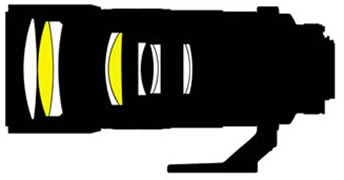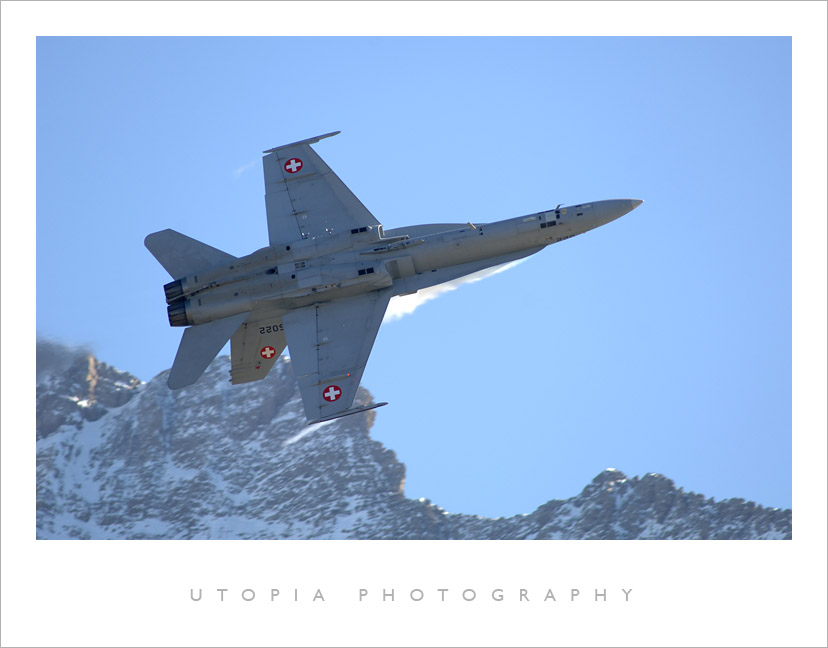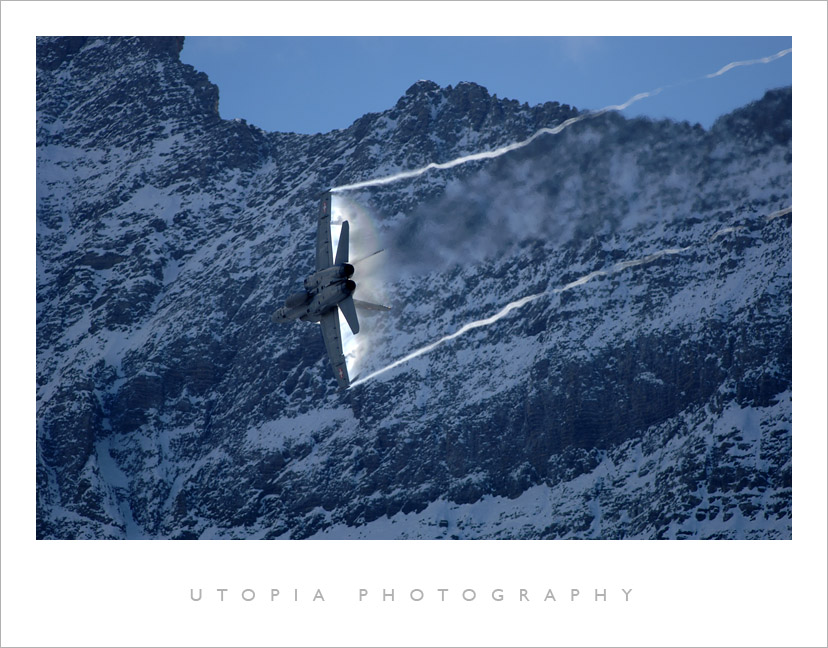

Nikon AF 300mm f/4 ED IF - The Poor Man's Tele Lens
|
Lens data for the Nikon AF 300 mm f/4 ED IF:
Lens construction: 8 elements in 6 groups (2 ED elements) Closest focusing: 2.5 m / 8 ft For DX sensors: full frame equivalent: 450 mm Filter: 39 mm drop-in, 82 mm on the front Hood: built-in Dimensions: 3.5 x 8.6 in Weight: 47 oz. Appearance: 1987 Performance on cameras with DX-sized sensors: Most of the time, I don't need lenses with a focal length above 200mm for my kind of work (portraiture, non-sports photojournalism, still life). To have some extra reach for the rare occasions, I bought a Nikon AF 300mm f/4 ED IF lens second-hand. This lens has very fine optics and can be bought second hand for a very low price. It beats most common zoom lenses in that focal range. The Nikon AF 300mm f/4 ED IF delivers tack sharp pictures with high contrast and a nice smooth blurred background (it has good "bokeh"). Only slight color aberrations at f/4 and f/5.6 occur from time to time - especially in high contrast situations (e. g. in images of the full moon). But these are very moderate when compared to aberrations caused by cheap zoom lenses. This lens can even be used as a very fine telescope if one attaches an eyepiece to the rear end of the lens. The image is upside down, however, if no prism is used. The only downside of this rather cheap tele lens is its somewhat slow autofocus performance in combination with a non-professional camera. With semiprofessional / professional cameras (D1, D1X, D1H, D2X, D2Xs, D2Hs, D3 / D200, D300) it's fast enough for many purposes. Most professional photographers who do wildlife / sports photography use longer lenses - sometimes even combined with teleconverters. For me, the 300mm f/4 lens is more than enough. Performance on cameras with FX-sized sensors: With the arrival of the Nikon D3, a few things have changed. With its full frame sensor, longer lenses are needed to cover the same. On cameras with DX sensors I've used the Nikon AF-S 70-200mm f/2.8G VR lens on a daily base. Sometimes I've switched to the Nikon AF 300mm f/4 ED IF (mostly at air shows). With a full frame camera, I would now need a 300mm f/2.8 lens and a 500mm f/4 lens to have the same flexibility. Unfortunately I currently cannot afford either lens so I find myself using the Nikon AF 300mm f/4 ED IF lens a bit more again. I have carried around and used several of the larger professional lenses like the 300mm f/2.8, the 400mm f/2.8, the 200-400mm f/4 and the 500mm f/4 at the Swiss Air Force training (Axalp mountain range, near Brienz, Switzerland) and the more I think about it, the more I like the idea of a compact Nikon AF-S 300mm f/4G VR or Nikon AF-S 400mm f/4G VR lens (VR standing for vibration reduction). Nikon doesn't produce these lenses but I think it should. Why? A 300mm f/4 or 400mm f/4 lens (with vibration reduction) will be rather compact and light. An f/4-lens might sound like a slow lens but you only lose one stop over an f/2.8 lens (which only means a doubling of exposure time). For many applications, this is very acceptable. |
I've used the Nikon AF 300mm f/4 ED IF for the first time on a D3 at a soccer game. I wasn't sure about
the aperture so I closed the lens down to f/6.3. I set the slowest exposure time to 1/640s (which proved still a bit
too long in many situations). The camera was on AUTO ISO and chose ISO values up to 1600 even though the players
were in the light of the setting sun. One can imagine what happens when the sun has set... The shots turned out
well but I wondered how much image quality would have suffered at f/4. On the next day, I've tested the Nikon AF 300mm
f/4 ED IF lens on a Nikon D3 to discover the limits of the lens. At what aperture does the lens deliver enough
sharpness? The tests showed: Sharpness is very good even when the lens is used wide open. Closing the lens down
to f/5.6 improves sharpness and contrast, but the results at f/4 are already convincing. So the next time, I will
use the lens wide open (as I always did on a Nikon D2X at Air Shows in the early morning). Maximum sharpness is reached
at f/8-f/11. Edge sharpness reaches very good values when the lens is closed down a bit. Vignetting is very well controlled
(as expected). At f/4 it's hardly noticeable because it's just a slight uniform darkening over the whole image (which
disappears at f/5.6).
It's quite clear, the f/4 lens cannot compete with the more expensive, bigger brother, the Nikon AF-S 300mm f/2.8G VR in most aspects. But it's a lot smaller and lighter (even more so when you have to climb a mountain with a 300mm lens...). For more information on the performance of the Nikon AF 300mm f/4 ED IF lens on the Nikon D3 full frame camera click here . Rating for the Nikon AF 300 mm f/4 ED IF lens (Maximum: 5, Minimum: 1): Image quality wide open: 4 Overall image quality: 4.5-5 "Bokeh": 4.5 Build quality: 4.5 Lens construction for the Nikon AF 300 mm f/4 ED IF lens: 
Shaded: ED glass Image © Laterna magica, M. Huber, Nikon F801s (1991) Lens construction for the Nikon AF-S 300 mm f/4D ED IF lens: 
Yellow: ED glass Image © 2008 Nikon Corporation (source) External reviews (Nikon AF 300 mm f/4 ED IF lens) bythom.com (AF) (cache: 1 ) bythom.com (AF-S) (cache: 1 ) xoomer.alice.it I (AF-S) (cache: 1 ) xoomer.alice.it II (MTF of AF & AF-S!) (cache: 1 ) naturfotograf.com (AF & AF-S) (cache: 1 ) naturfotograf.com (AF-S comments) (cache: 1 ) kenrockwell.com (AF) (cache: 1 ) photozone.de (AF-S, 3 parts) (cache: 1 2 3 ) *) Contact me if you know interesting reviews not listed here. The cache numbers in parenthesis next to the links lead to cached pdf files (just in case the original links don't work anymore). The files usually only represent parts of the original contents from January 2010. |
Some images taken with the Nikon
AF 300mm f/4 ED IF lens
(Sensor: DX format):

|

|

|